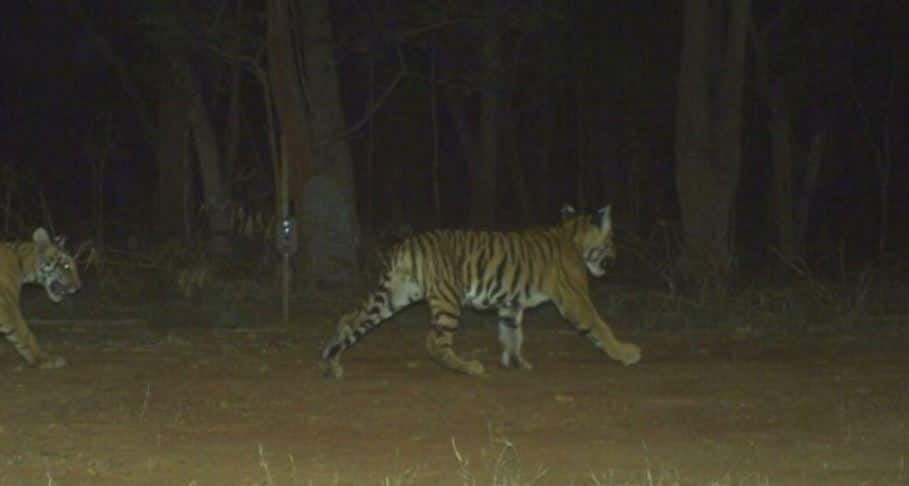India's 2018 tiger census sets new Guinness Record as largest camera-trap wildlife survey
India's tiger estimation for the year 2018 has entered the record books as it was awarded the Guiness World Record on Saturday for being the largest camera-trap wildlife survey.
Trending Photos
) (Image courtesy: Twitter/prakashjavadekar)
(Image courtesy: Twitter/prakashjavadekar) New Delhi: India's tiger estimation for the year 2018 has entered the record books as it was awarded the Guiness World Record on Saturday for being the largest camera-trap wildlife survey.
Sharing the news on microblogging site Twitter, the Minister of Environment, Forest & Climate Change Prakash Javadekar claimed that India was able to double the number of tigers in the country four years before the target.
Javadekar wrote: "Under the leadership of PM Narendra Modi, India fulfilled its resolve to double tiger numbers 4 years before the target through #SankalpSeSiddhi. The All India Tiger Estimation is now in the #GuinnessWorldRecord for being the largest camera-trap #wildlife survey, a great moment indeed & a shining example of #AatmanirbharBharat!"
The All India Tiger Estimation is now in the #GuinnessWorldRecord for being the largest camera-trap #wildlife survey, a great moment indeed & a shining example of #AatmanirbharBharat !@narendramodi @GWR @moefcc @PIB_India @DDNewslive — Prakash Javadekar (@PrakashJavdekar) July 11, 2020
In 2018, India had as many as 2,967 tigers in the wild, with more than half of them in Madhya Pradesh and Karnataka, according to that year's tiger estimation report.
The paired camera traps were placed at 26,760 different locations across 139 study sites, which generated approximately 35 million photos, including 76,523 tiger and 51,337 leopard photos.

The data was released by Prime Minister Modi, who announced, to the delight of nature lovers that the population of the tigers had jumped from 2226 in 2014 to 2967.

There was a population increase of nearly 33% since the last census in 2014 when the total estimate was 2,226.

Not only has it set a new world standard in tiger census but also the encouraging results have validated India’s efforts in tiger conservation.
It also means that India has become one the most largest and secure habitats for these wild cats.

An application was sent to the Guinness Book of World Records to see if this was the largest wildlife survey ever conducted anywhere in the world.
Stay informed on all the latest news, real-time breaking news updates, and follow all the important headlines in india news and world News on Zee News.
Live Tv







)
)
)
)
)
)
)
)
)
)
